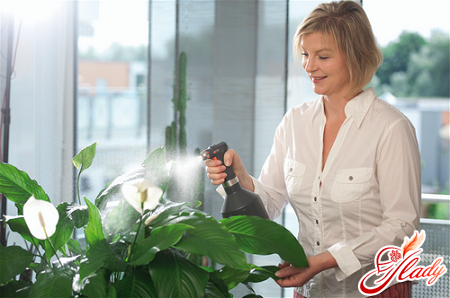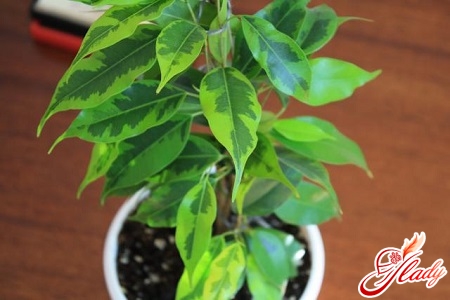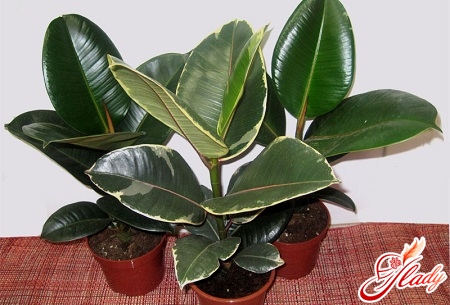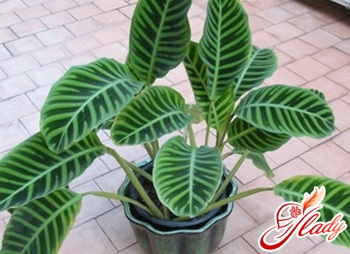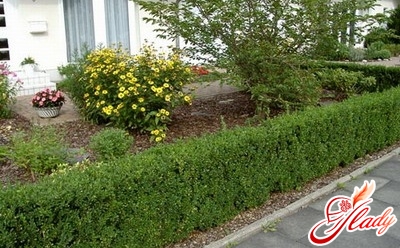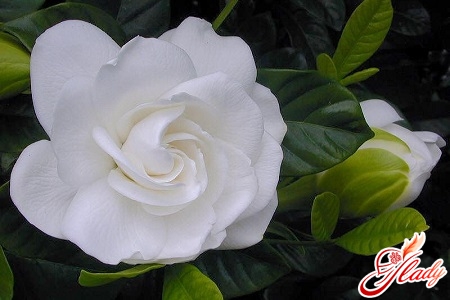 Gardenia is a houseplant thatcan become a real decoration of your interior. Most often, we receive this flower as a gift and have absolutely no idea what kind of care it needs. Among flower lovers, it is generally accepted that this plant is difficult to care for, and without proper conditions, it simply dies. In this article, we will try to dispel your doubts and tell you how to “make friends” with gardenia. In natural conditions, this plant can be found in Japan, India or China, where it grows as small trees or bushes. Indoor gardenia is a low bush growing up to 50 centimeters in height. The leaves of the plant are smooth, dark green and shiny. Flowers are collected in inflorescences, competing in beauty with roses. The flowering period lasts about six months.
Gardenia is a houseplant thatcan become a real decoration of your interior. Most often, we receive this flower as a gift and have absolutely no idea what kind of care it needs. Among flower lovers, it is generally accepted that this plant is difficult to care for, and without proper conditions, it simply dies. In this article, we will try to dispel your doubts and tell you how to “make friends” with gardenia. In natural conditions, this plant can be found in Japan, India or China, where it grows as small trees or bushes. Indoor gardenia is a low bush growing up to 50 centimeters in height. The leaves of the plant are smooth, dark green and shiny. Flowers are collected in inflorescences, competing in beauty with roses. The flowering period lasts about six months.
Conditions of detention
This plant is distinguished by its very conservativecharacter - does not like rearrangements from place to place and sudden changes in air or soil humidity. Any changes will cause the gardenia to start shedding leaves and buds. Therefore, caring for this plant should begin with observing two important rules: no changes, sufficient light, moisture and heat. Indoor gardenia is a fairly light-loving plant, for which it is very important to provide adequate lighting throughout the day. Only the light should be diffused - direct rays can harm the plant. Air humidity also plays a big role in the life of gardenia, especially during the period when buds appear. If the air is dry, the flower stalks stop developing and fall off. In order to achieve the humidity required by the plant, you need to put it on a tray with water and expanded clay. The latter serves as a protective cushion that will protect the flower from excess moisture. During the period when the flower is actively growing new leaves, it is advisable to additionally spray the crown. But as soon as buds appear, it is better to stop spraying or to do it around the plant, trying to prevent water from getting on the flowers. In the warm season, gardenia should be kept in a room where the air temperature is 22-24 degrees Celsius. In winter, 18-20 degrees is enough for it. It is also important to avoid too sharp temperature changes.
Features of watering
When is gardenia in its active phase?growth, it needs abundant watering. It is important not to flood the plant, but to water it as the top layer dries. In the cold season, watering is reduced. About four months before flowering (in March or April), watering should also be moderate - this is necessary for the correct formation of buds. In no case should you allow the soil to dry out or become overly moist - the gardenia will begin to get sick and shed its leaves. For watering, you need to use warm, settled water. Periodically, the flower needs to be watered with water acidified with lemon juice (3-5 drops per liter of water). An alternative to such watering can be water infused with peat. With improper watering and a lack of fertilizers, the gardenia leaves begin to change color and become smaller.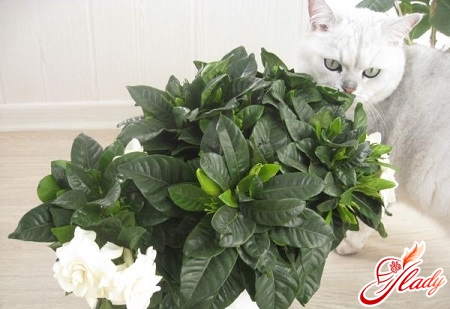
Gardenia transplantation
Usually an adult plant is repotted everytwo years. The root system of gardenia grows very quickly and has many thin roots, so it needs frequent transshipment. The soil must necessarily contain a lot of organic matter and be sufficiently nutritious. Slightly acidic or acidic mixtures intended for azaleas are ideal. But you can also use another composition - the main thing is that it does not retain water. Be sure to take care of the drainage layer. Or add vermiculite or coconut fiber to the soil - 1/3 of the total soil. You cannot transplant a blooming gardenia - it will immediately shed flowers and leaves, will be sick for a long time.
Reproduction at home
Gardenia propagation occurs vegetatively - withusing cuttings. It is worth noting that it takes root with great reluctance. It is best to start propagation in the winter, when the plant is pruned to form a beautiful crown. You can also propagate by cuttings in the summer, but be sure to do so before the flowering period. Cuttings are prepared from adult semi-woody shoots, at least 10 centimeters high. To get the maximum number of rooted plants, the cuttings can be treated with a special rooting stimulator and planted in a container with bottom heating. The soil is the same as for adult plants. Peat and perlite mixed in equal proportions is perfect. The container with cuttings must be covered with film and high humidity is constantly maintained inside it. Reproduction can be considered complete only when the cuttings are well rooted. If you take care of the seedlings according to all the rules, the young plant will bloom in six months. For successful propagation, the lower cut of the cutting should be even and smooth. When planting it, make sure that the leaves do not touch the ground. If the leaves are too large, it is recommended to shorten them by about 1/3, otherwise they will evaporate a lot of moisture. Only the very top leaves should not be touched - a growth point should soon appear there. It has been noted that cuttings located near the edge of the container take root best. About a month after rooting, the leaves will unfold, and the gardenia can be transplanted into a separate pot. Further care is no different from maintaining an adult plant. Transshipment of young gardenia is carried out as the root system grows. After the first transplant, you can begin to feed the plant: weekly in summer, once a month is enough in winter. As a fertilizer, choose any mineral complex with a high content of phosphorus and potassium. If the gardenia leaves become lighter, most likely, there was a sharp cooling of the soil. Perhaps you used too cold water for watering. Regular fertilization with iron-containing substances will help to cope with the problem.
Main content problems
- Why do the leaves turn yellow?
If the plant does not have enough light or nutrientssubstances, the leaves begin to turn yellow, and new ones grow very slowly and have a pale shade. To avoid such trouble, provide the flower with bright light and feed it every week. If the leaves turn yellow in streaks or in the vein area, this is the first sign of chlorosis. This problem occurs when there is an excess of alkali in the soil. In this case, the gardenia needs to be replanted in new soil or simply replace the top layer of soil. It would not be superfluous to water with water and lemon juice.
- Why do buds fall off?
Sometimes caring for a gardenia does not bring the desired resultsresult: the leaves wither and fall off, the buds fall off without ever blooming. Most likely, the plant does not like the conditions. Move it to a warmer room and try to water it only with settled water at room temperature.
- Why do the leaves turn black?
If you find that the leaves on your gardeniaturn black - immediately start watering the plant with acidified water. If the leaves become covered with dark spots - you either overwatered the plant or sprayed it in direct sunlight. In the first case, it is better to transplant the flower into fresh soil and not make such mistakes again. In the second - the leaves have received a thermal burn. Carefully remove the damaged areas and move the plant to partial shade for a while.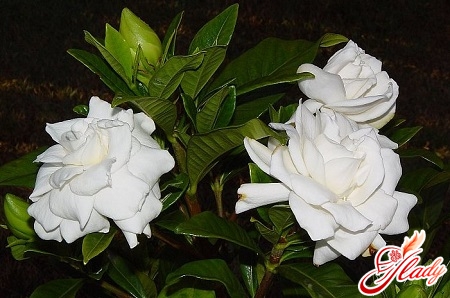
Crown formation
In order for the gardenia to grow beautifully andneat bush, you need to trim it regularly, forming the crown. On a young plant that is just starting to grow, you can simply pinch off the upper buds. If you have an already adult bush that is formed incorrectly, you can try to rejuvenate it. To do this, in the spring, you need to trim all the shoots, leaving 4-5 centimeters. Then place the pot with the plant in a well-lit place and, as the young branches grow, form the bush at your discretion. Yes, caring for a gardenia at home requires much more attention than maintaining any other indoor plant. But if you can find an approach to it, you will never regret choosing this flower.




